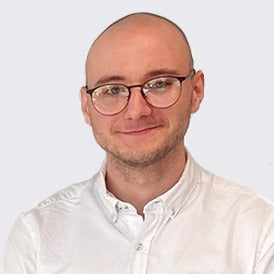I.
Before I started Yes, That’s 3D Printed, I was working at an international 3D printer distribution company.
We probably had the largest selection of machines in the entire industry, from $100 Creality printers to $300K metal sintering behemoths.
Maybe the most interesting brands to me was Nexa3D, boasting the fastest resin 3D printer in the world.

Nexa3D was a late entrant to the 3D printing market, but they quickly became on of the biggest.
This was entirely thanks to raising almost $100 million dollars in venture capital funding.
The company was formed around the invention of an Italian maker, who created a new type of slimy release film, that let you print much faster than the traditional FEP.
(They called the film a “lubricated membrane”... I was always baffled how nobody at that company realised the innuendo.)
Anyway, this was supposedly THE fastest resin printer in the world.
6.5x faster than regular printers, according to their marketing.
And boy there was lots of marketing hype around it.
It cost $40,000 if I remember right.
It was expensive, yeah, especially because it wasn't a DLP or SLA printer, it used LCD screens like Elegoo or Anycubic etc
But if you want the best, you got to pay the price - I supposed.
We picked it up for distribution, and…
Nothing.
Zip. Nada. Nobody was interested.

Well, maybe we just need to tell people about it, we thought.
We asked Nexa3D who would be a good target customer for this.
They said 3D printing services will love it.
"They can even offer a same-day printjobs with it!"
So we spoke to 3D printing services.
Their response was,
“Why would we buy this, when we can buy 10-100 regular printers for the same price. Okay, it's faster, but that's still much less productivity.”
Good point.
We went back to Nexa3D to ask for more ideas.
They gave the example of product designers.
“Just imagine: the designer shows the brief to the client, then presses print on the machine. They go to grab a coffee, and by the time they’re back with the coffee, the print is finished! Presto!”
Sadly, in all my years of 3D printing, I never had a client come to me with this difficult coffee-grabbing scenario. I would have known what to recommend them.

II.
We gave up on Nexa3D.
A few months ago, Nexa3D also gave up on themselves.
But not before wasting millions in investor money, and leaving the few people who bought their machines without support.
Thinking back on it, I realised they were probably doomed to fail from the beginning.
They didn’t start out by trying to help anyone.
They didn't try to solve anyone’s problems.
They started out with a technology they could patent, so they could profit big from it if it gets popular.
If someone finds a use for it.
Unfortunately, they didn't.
III.
It was a sad story that I took to heart.
What makes it sad to me is that it keeps happening again and again, wasting countless human hours and money.
It happens especially often in the 3D printing industry.
In any case, I think the antidote is to zag hard in the exact opposite direction.
I think that when you focus in very narrowly on who you want to help, and what you want to help them do, you will naturally start asking questions that would never otherwise come up.*
I think that when you focus on improving just a little corner of the world, and use whatever technology can make that happen, you can make something really great - if only for a few people.
Well, we made our resins for just a few people.
*For instance, in the past I never considered that someone might want to cut into resin prints or shave them.
But wargaming hobbyists regularly use knives on plastic minis, so it was a natural thought to try to maker WARGAMER prints cuttable too.
(Of course, obvious ideas are only obvious in hindsight. Credit belongs to Mr. FauxHammer who originally thought of this.)


 https://yesthats3dprinted.com
https://yesthats3dprinted.com

